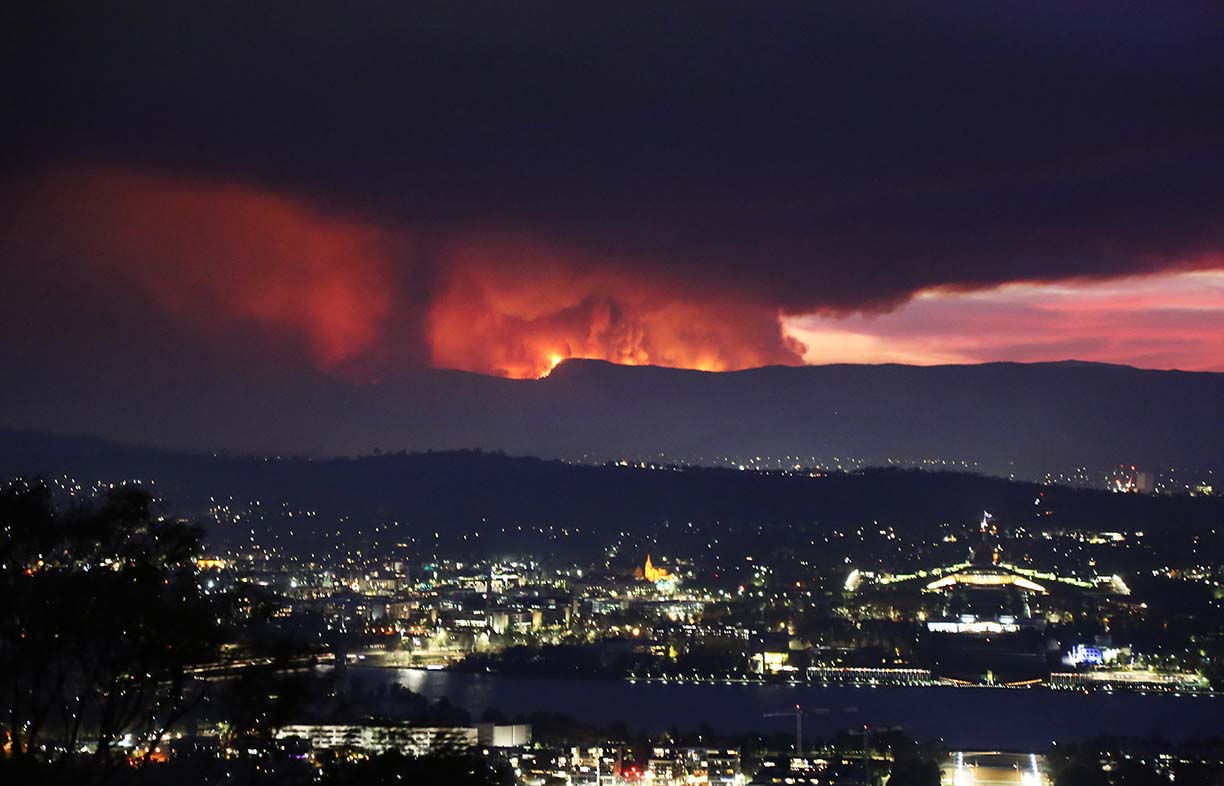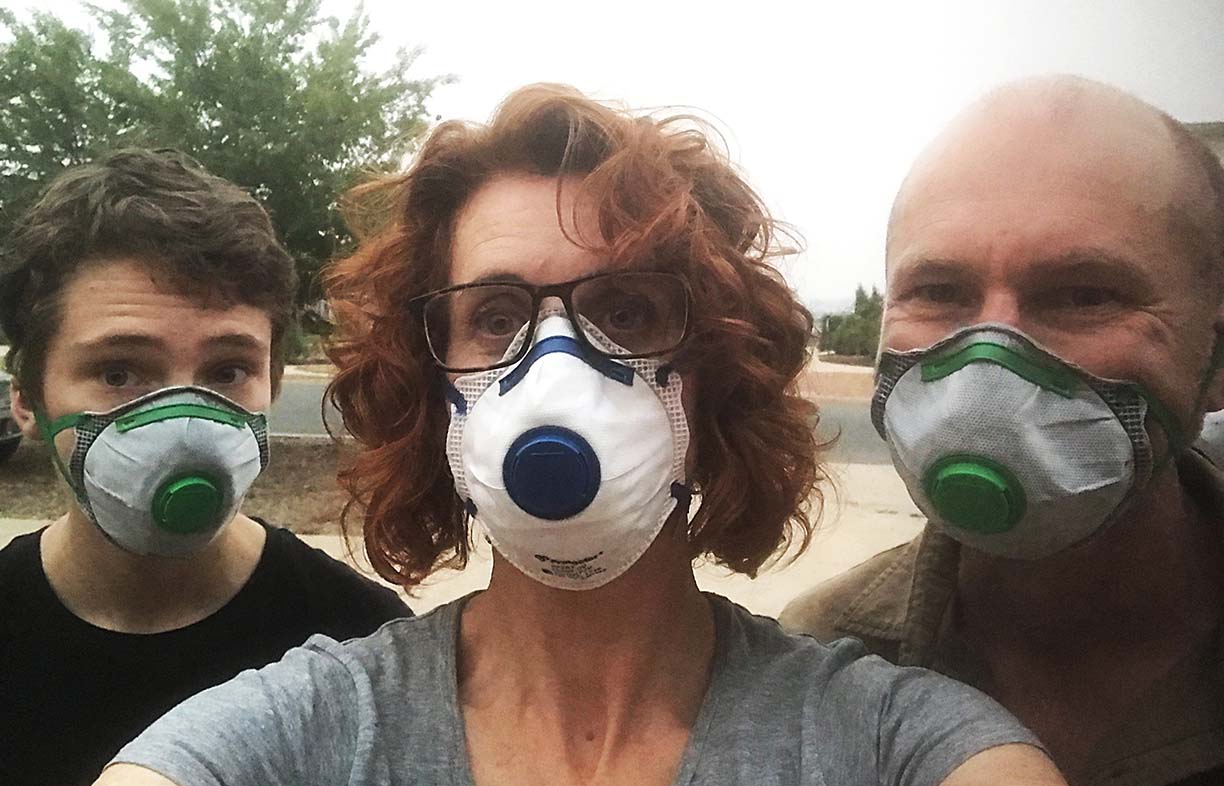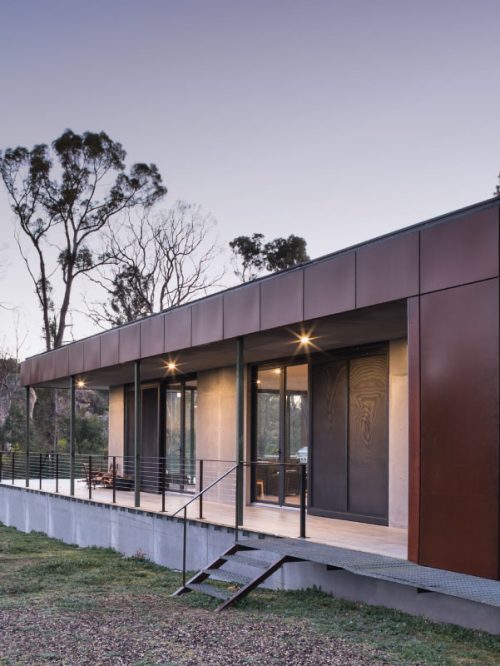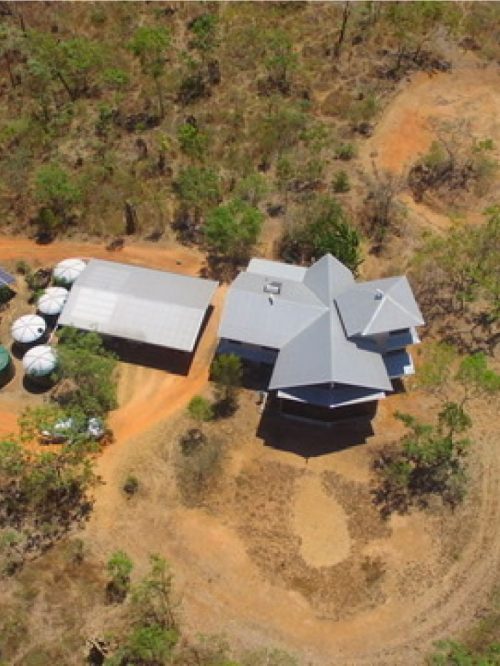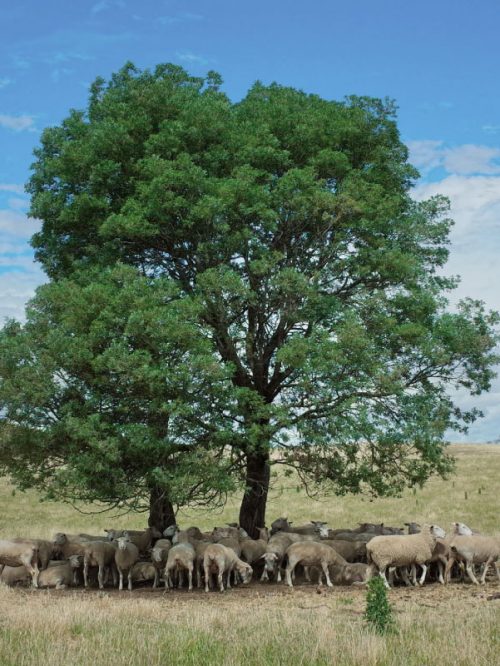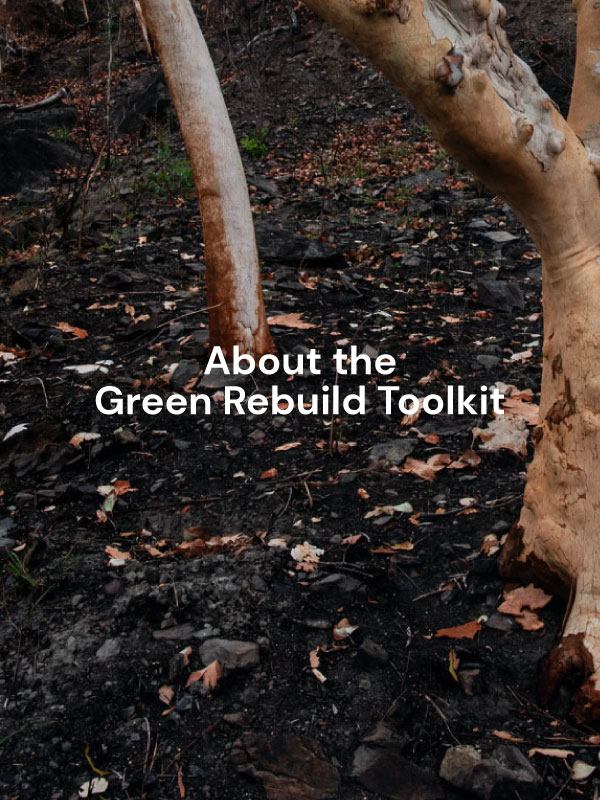Traditional approaches to good indoor air quality centre around materials that don’t off-gas, indoor plants and an abundant supply of fresh external air – but what if it’s not so fresh? Building scientist Jenny Edwards looks at what you can do at home when the outside air is hazardous, as was the case in many parts of the country during the 2019/2020 bushfires.
During the 2019-2020 summer, bushfires raged across Australia, destroying homes, forests, farms and lives. Now, as the colder months approach, the fires have stopped burning and the world has moved on to other pressing concerns. But it is important to learn from our experiences.
Besides the destruction caused by the flames, the fires caused lower level but widespread problems across much of Australia because of smoke. Huge, sprawling smoke clouds spread over hundreds of square kilometres for weeks, causing sustained extreme air pollution even in towns and cities far from the fire fronts.
Smoke emits various kinds of toxic air pollution. One measure of this is the concentration of particles less than 2.5 micrometres in size, or PM2.5. A level of 50 micrograms per cubic metre (µg/m3) is considered hazardous. In my hometown of Canberra, the city most affected by the bushfire smoke, the PM2.5 level is usually less than 10µg/m3. During the fires it was routinely over 50, often in the hundreds, and hit peaks over one thousand. On days of heavy smoke, the health centres and hospitals experienced influxes of people with respiratory problems. Health experts have noted that the sustained PM2.5 levels were “unprecedented” for a large urban population and will likely have long-term health impacts. Living in Canberra, I experienced this intense, sustained smoke first-hand.
It was an extraordinary climate event (using climate in the broadest sense), unprecedented in living memory, and hopefully one that we will not experience again any time soon or with regularity. But massive fires could happen again, or some other sustained pollution event could occur.
Keeping people safe and healthy meant keeping them out of the smoke. With the fires behind us, now is a good time to ask: How did Australian homes perform during the 2019-2020 summer fires? What could we do differently, to help them perform better next time?
The answer to the first question is ‘poorly’. And not only homes but commercial buildings too. On one particularly smoky day, smoke haze was visible inside Canberra’s shopping malls. Many offices had high concentrations of indoor pollutants but continued to operate anyway. The logic in staying open was that they were not endangering the welfare of employees, because those employees were experiencing just as much particle pollution at home as at work. That may sound callous, but the employers were right: smoke infiltrated all Canberra homes. Even high-performance homes such as those designed by my company Light House Architecture & Science, as well as those built to Passive House guidelines, were not immune to smoke infiltration.
As Sanctuary readers know, an airtight building is a more energy-efficient building, because it allows in fewer cold draughts in winter and less hot air in summer, stabilising the indoor temperature. It’s important though to allow plenty of opportunities to vent an airtight home with openable windows and possibly mechanical ventilation with heat recovery (MVHR) systems. An airtight home has another benefit: you can close it up and stop outside pollutants coming in, then open up when they have dissipated. This applies not just to bushfire smoke but to pollen, dust and your neighbour’s barbecue smoke.
That’s the principle that people in the efficient home design business, including me, have worked with. Close up when the air is bad, vent when the air is clear. That system didn’t work last summer with several weeks of extreme bushfire smoke. Highly airtight houses stayed smoke-free for longer than leaky houses, but they eventually caught up.
The smoke had detrimental effects on air quality in airtight homes in more indirect ways. I mentioned that one of the principles of energy-efficient design is venting. In summer, we close up our airtight, passive solar house during the day, then open it up when the external temperature drops: we describe this as designing for good cross ventilation to cool the house naturally in summer. This was not possible during the fires because ‘venting’ meant that the house would quickly fill with unbearable levels of smoke. The other problem is that if a house is tightly sealed for an extended time, indoor air quality gets worse from the things, residents and activities inside a home. Moisture, carbon dioxide, cooking by-products and other things can build up and compromise our health.
The reality is that there is no way to keep out sustained pollution with building design alone. It doesn’t matter how airtight your house, unless you like to get around in scuba gear, the air you breathe when you’re inside comes from outside. Airtightness helps, but it is not enough on its own.
EXPERT FEATURE
Words: Jenny Edwards
First published in Sanctuary 51
What can we do better?
Airtightness
The first principle for pollution protection is to make our homes more airtight. Now, that might surprise you, since only a moment ago I was explaining that smoke gets into even the most airtight homes eventually. The point is that airtightness is not enough on its own, but it is an important first step. Any other measures you take will be ineffective, or less effective, if the building has a lot of air leakage.
And in situations other than prolonged high pollution levels, airtightness will be enough on its own. If your local environment is filled with smoke from a nearby fire for a few hours, or even a couple of days, you can stay safe and protected from that smoke in a closed-up home.
The basic principles behind airtight design for a new home are to install airtight doors and windows, minimise penetrations in the ceiling, and pay attention to detail when constructing the internal envelope of the building. Existing homes can also be made more airtight by replacing leaky doors and windows and by sealing air gaps (which can be effectively located with a blower door test). For more detail on these principles, see my article on airtight design and mechanical ventilation in Sanctuary 47. The draught sealing buyers guide in Renew 147 may also be of use.
Air filtration
The second principle is air filtration. There is no way around this. No matter how clever your design, or what materials you use, or how tightly closed your envelope, prolonged pollution needs mechanical filtration. There are various ways of doing this, with varying effectiveness.
Portable air purifiers
An air purifier is a straightforward and effective solution. They are available in a wide size and price range: make sure you read specifications and reviews before purchase (consumer advocacy group Choice recently published a very useful buying guide: bit.ly/ChoicePurifiers).
The most important feature for an air purifier is a high-efficiency particulate air (HEPA) filter. HEPA filters generally trap 99.95 per cent of dust, smoke, mould and other tiny particles in the air, all the way down to 0.3 microns. Ionising filters are also said to be good for removing fine particles such as dust and smoke, but ionisation can produce ozone which may cause breathing irritation.
I found that the small portable Dyson models did a good job in individual rooms even on very smoky days (and some others apparently performed even better in the testing done by Choice). They’re light and easy to carry, so you can move them around as needed. For larger spaces such as my business office, which is open plan and around 300 square metres, even the larger portable models struggled to clean the air. You need to move up to a serious, commercial purifier at that point. The Australian-made InovaAir units are notable for their larger than average filters and minimal plastic use to avoid off-gassing from the unit itself. Both home and commercial models are available.
Air conditioners
A reverse cycle air conditioning unit cools down (or heats up) the air in your home but should not be relied upon to also purify it. Most air conditioners simply recirculate internal air; a few models have a setting to bring in outside air and this should be turned off during times of poor external air quality.
Some air conditioners have ionising air purification features that can help to filter out smoke. The Panasonic Nanoe-G models, for example, claim to filter particles at the PM2.5 size. Some models by other brands including Daikin and Mitsubishi Electric incorporate photocatalytic filters that can remove some smoke particles as well as allergens. None of these air conditioner filters will be as effective as a dedicated air purifier with HEPA filtration. Read more in this Choice article: bit.ly/ChoiceAircon.
Unfortunately, my research suggests it is not practical to fit HEPA filtration to most air conditioners, due to the very tight weave of the filters. Air conditioners move large volumes of air and they would need much more powerful fans to force that air through a dense filter. However, the Air Conditioning Dealers Association says that “upgrading your filter to a pleated disposable type HEPA or other higher filtration option is an excellent way to reduce bushfire smoke contaminants within your home”. So it may be worth checking with your local air conditioning expert to see if they can assist you with filtration upgrades to your existing system. I would be cautious though.
It’s quite possible, after the experience of last summer, that domestic air conditioners with true HEPA filtration might appear in the future.
Mechanical ventilation with heat recovery (MVHR) systems
As with currently available air conditioning units, MVHR systems should not be relied upon to purify air. They are primarily for ventilating your home and their focus has been on maintaining healthy CO2 and humidity levels with minimal heat transfer between inside and outside.
Standard MVHR systems have filters, but as with reverse cycle air conditioners, they generally have not been designed to catch fine PM2.5 particles. These are the ones that, besides being the smallest and hardest to filter, are also the most hazardous to your health. For some systems you can purchase higher quality electrostatic filters that can capture some smoke particles, but these are non-standard. If you have an MVHR and have not upgraded the filters, your system probably does not protect you from smoke particles. Retrofitting high-density HEPA filters to such systems raises the same problems of needing increased fan power as air conditioners, as mentioned earlier. All MVHR suppliers are much more aware of the filter options following last summer’s bushfires and should be available to provide guidance.
Renew 151 article ‘Keeping the smoke out’ discusses MVHR systems and smoke infiltration in more detail.
Low-tech, home-made solutions
There was much talk in Canberra during the Black Summer about home-made solutions. A popular one was the towel-filter: people hung wet towels in front of fans, the idea being that the towel could act as a filter, catching particles circulating from the fan. Another was fitting a HEPA filter from an auto supplier to a standard portable fan. The logic sounds reasonable, but my limited testing of such set-ups showed that they did not have an appreciable effect.
Measurement
A common mistake many people made with smoke this summer was that they thought that they could tell just by look and smell when the air was safe. There were plenty of times when it was clearly not safe, such as when the streets were encased in a thick, dark pall. But particularly for indoor environments, look and smell can be deceiving and lull us into false complacency. That’s because when we smell smoke, it’s mostly the larger particles of up to a diameter of 10 micrometres (known as PM10) that we’re smelling. Air conditioning units often do a reasonable job of clearing these large, smelly smoke particles, to the relief of our noses. But they don’t do as well with the smaller PM2.5 particles, which are often undetectable by smell, or the noxious gases that accompany bushfire smoke. The gases and small particles that evade the air conditioner filter and our olfactory senses, are also efficient at infiltrating indoor areas through tiny cracks and porous envelopes. They can get inside undetected.
That’s why the third principle is measurement. You can’t rely on your eyes and nose to decide whether your indoor environment is polluted; you need specialised equipment.
Many air purifiers come with pollution sensors. Their reliability is not great: a pollution specialist who assessed my office discovered that the built-in meter in our air purifier was underestimating the particulate levels. Even so, it can still have some value because, whether it’s calibrated too high or too low, a meter can still track changes in pollution over time.
The best solution to measurement is to buy a dedicated meter. I invested in two PurpleAir meters (bought from the US manufacturer), one for inside my office and one for outside on the balcony, allowing me to track how the indoor pollution compared to outdoors so decisions could be made about, for example, whether to keep the doors open or closed. The PurpleAir meters transmit data to the company’s website, where they go online and can be accessed by anyone. As a result, they not only help me monitor pollution levels around my office; they also contribute to an international crowdsourced data-gathering endeavour. There is much debate about the accuracy and usefulness of PM2.5 meters. They come at vastly different price points. I encourage you to do your own research to match your particular needs.
In conclusion
The three principles of home air pollution resilience are airtightness, filtration and measurement.
Buildings can’t be made airtight quickly. The best solution is to build them that way, and failing that, to do a comprehensive, detailed retrofit.
Air purifiers with high quality filters and measurement devices can be bought at short notice, but if demand spikes, they can be hard to find. That was certainly the case in Canberra last summer. After a few days of smoke, they were very hard to come by along most of the east coast of Australia. Don’t expect reverse cycle air conditioners and MVHR systems to also be high quality air purifiers (for now at least – watch this space!).
Measurement is the principle most likely to be neglected but it is just as important as the others. With good data you can make good decisions. Without it, everything is guesswork.



